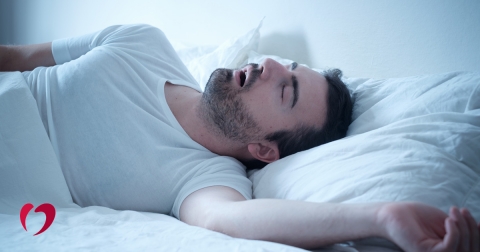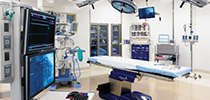How Sleep Apnea Impacts Health

Sleep is a critical factor in overall health because it renews the body and the mind. Most adults need seven to eight hours of sleep each night, but the average amount of sleep in the United States is about five hours.
The brain goes through several distinct phases during sleep, one of which is called rapid eye movement (REM) sleep. During REM sleep, your brain and body are energized and dreams happen. REM sleep is important for learning and mood balance, and getting less than seven hours means your body misses a cycle of REM sleep.
Sleep disorders can also interfere with your body’s ability to enter REM sleep and feel rested. Three common sleep disorders are sleep apnea, narcolepsy, and restless leg syndrome, with sleep apnea being the most common.
Health impact of sleep apnea
People with sleep apnea stop breathing repeatedly while they sleep, which means the brain and body aren’t getting adequate oxygen and aren’t getting adequate sleep. Untreated sleep apnea can impact a person’s overall health and wellness, increase their risk of sudden death overnight, and increase their risk of accidents or injury from falling asleep during daytime activities.
If left untreated, sleep apnea also contributes to an increased risk of heart attack, stroke, congestive heart failure, and chronic liver failure. It can also increase the severity of other chronic diseases, including diabetes, COPD, and immune disorders. There’s also a strong connection between sleep apnea and hypertension, or high blood pressure.
Risk factors and symptoms of sleep apnea
It’s a common misconception that sleep apnea only occurs in people who are overweight, but people of any weight can experience sleep disturbances or sleep apnea. While being overweight does increase your risk for sleep apnea, it’s not exclusive to people who are overweight.
Other risk factors include family history, lifestyle factors such as alcohol and smoking, and age. Sleeping on more than one pillow or sleeping in a semi-upright position, such as in a recliner, are also risk factors for sleep apnea.
Some of the common symptoms of sleep apnea include:
- Snoring, which is the largest risk factor
- Daytime sleepiness
- Falling asleep when sitting up
- Falling asleep within minutes of hitting the pillow
Diagnosis and treatment
If you feel that you are getting enough hours of sleep each night but still don’t feel rested or experience the symptoms listed above, talk to your doctor about your potential risk for sleep apnea. Sleep apnea is diagnosed through a sleep study, where you are monitored overnight in a special sleep center.
The most common treatment for sleep apnea is the use of continuous positive airway pressure (CPAP) therapy. The CPAP machine delivers a steady flow of air pressure through a mask to keep your airways open throughout the night and prevent apnea episodes. Other treatment may include lifestyle changes to reduce risk factors.
If you suspect you may have sleep apnea, talk to your doctor about a referral or contact the Oklahoma Heart Hospital Sleep Center at (405) 628-6767 for a sleep evaluation or study. The Sleep Center is located at 530 SW 80th Street in Oklahoma City.




